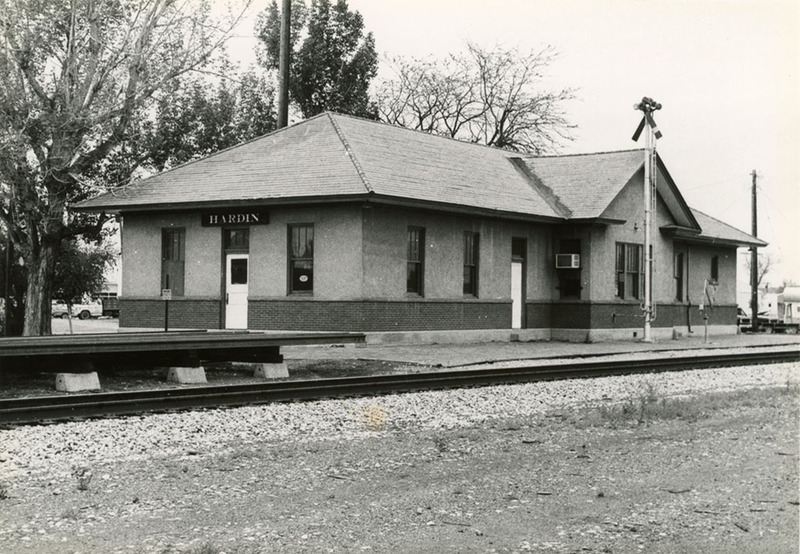
Hardin’s first railroad depot was moved from Fort Custer after being cut into small sections and transported by train over the Big Horn Bridge. That depot was expanded in 1909, but was deemed inadequate after the homestead boom dramatically increased freight and passenger traffic during the teens. Modeled on Burlington depots in Nebraska, the 1923 depot is a hollow clay tile structure with a brick and stucco veneer. The interior included a general waiting room, men’s waiting room, ticket office, and baggage and express room. Segregation was in effect in Hardin, and in addition to men’s and women’s bathrooms, there was a separate bathroom for Indians. Like other depots, the back of the building (facing the town) is equally as prominent as the building’s front (facing the tracks). Declared by the Hardin Tribune to be “one of the best depots” for a city Hardin’s size “between the Missouri river and the coast,” the building, at an estimated $100,000 price tag, showed the railroad’s faith in Hardin’s future.
Images
